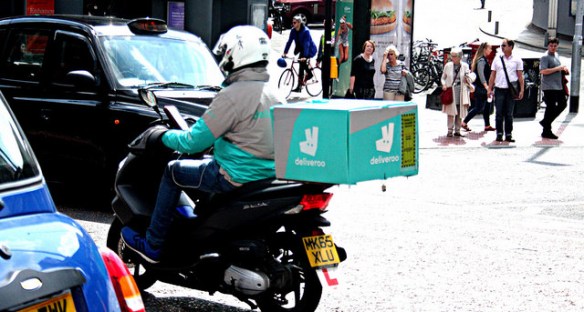Any reader who – like me – has a masochistic tendency to peruse through The Australian from time to time might have noticed a series of reports over the last few months about weather data inaccuracies in Goulburn. The Environment Editor Graham Lloyd reported in August that the temperature near Goulburn was slightly colder than a reading from the Bureau of Meteorology (BoM)’s nearby weather monitoring station. As Lloyd reports, a vigilant local ‘bush meteorologist’ named Lance Pidgeon knew it was cold “because his cold water pipes froze” and then, when he went to check the BoM website, he noticed the temperature had plunged to minus 10.4 degrees celcius, but then: “the temperature recording on BoM’s website adjusted itself to minus 10C”. According to Lloyd, this has left BoM “open to claims that it is working to ensure the dominant narrative of rising temperatures due to climate change remains intact”.

Here is a weather monitoring station. It’s probably not the one near Goulburn. (credit: Fringe2013)
Let’s tease out the implications of Lloyd’s inference that there is a conspiracy at work here; apparently the theory of human induced climate change is reliant on two weather monitoring stations near Goulburn and Cooma which have been deliberately modified to not go below minus 10C. Presumably, if the news got out that the temperature near Goulburn was, in fact, half a degree lower than minus 10C at some point in August 2017, the International Panel on Climate Change’s Assessment Reports would crumble into irrelevance. Or perhaps Lloyd is inferring it’s not just the weather monitoring station near Goulburn. Maybe climate scientists across the world have agreed to artificially limit the cold readings on all their weather monitoring stations and it’s just that other countries don’t have someone with the investigative zeal of Lance Pidgeon to expose the charade. Either way, it’s hard to avoid the sense that, on the spectrum of climate change climate conspiracies, the Conspiracy Of The Tampered Weather Station Near Goulburn is so self evidently whacky it makes the needle on the Climate Conspiracy Monitoring Station explode.
For those who acknowledge the overwhelming consensus of experts in climate science, it can be hard to comprehend the psychological process by which the environment editor of a nationally syndicated newspaper can entertain the notion that the veracity of climate change research is premised on a conspiracy involving altering of a couple of weather stations in New South Wales. The psychological disconnect is generally interpreted through the prism of the War on Science waged by the Right – particularly since the rise of Trump – whereby objective facts are given less value or emphasis than emotions or values due to a proudly defiant ignorance. The War of Science goes hand in hand with the theory of Fake News, and relies on the psychological premise of rather stupid individuals being hoodwinked by media puppet masters who are financially invested in the economic status quo.
The psychology of climate change denialism (at this point, it’s not skepticism) can perhaps be better be understood not as part of a modern populist attack on objectivity, but instead as part of a historical and bipartisan tradition of attacking claims to objectivity that are perceived to conflict with existing political values. As the columnist for The Australian Maurice Newman once wrote, the theory of climate change “is about a new world order under the control of the U.N”. For Newman: if the science of human-induced climate change is accurate, it would necessarily conflict with his political values regarding the virtue of capitalism. Therefore, to fend off the attack on capitalism without having to defend capitalism or contend with Sir Nicholas Stern’s comment that climate change is the “greatest market failure the world has ever seen”, he disputes the validity of climate change. The science is wrong ergo the political values are correct.
When seen from this perspective, the psychology of climate change denialism should be a lot easier for those on the Left to comprehend because it mirrors the strategy taken in relation to the area of science most widely disputed by progressives: the biological underpinnings of gender. The prevailing view in most progressive circles is orientated around the notion that there are no behavioral differences between the sexes that don’t arise from social conditioning. I’m not as interested in challenging this doctrine in this article as I am in examining why it is is so strongly held by the Left (although if you want to read some good responses to the theory, there’s a great recent article by Ben Gleeson at Homer and a great (relatively long) recorded debate about gender and science between Steven Pinker and Elizabeth Spelke).
If differences between genders could be established at the level of biology, it is feared that this could ‘justify’ gender inequality and mistreatment of people based on their gender identity. As Ben Gleeson succinctly presents the argument: “for decades now, political progressives have fought, rightly, to establish a constructivist view of sex and gender… as such, it may seem that biological perspectives would only promote a regressive, perhaps offensive or even oppressive viewpoint.” The notion however that a biological fact could imply or justify a particular moral or political value is known as the Naturalistic Fallacy. This fallacy, as described by the cognitive psychologist Steven Pinker, is the belief that what is found in nature is morally good. The fallacy is what drives arguments such as: nature designed men to be competitive, therefore women should stay at home and nurture children. The implicit connection of what *is* and what *ought* to be often drives progressives to adopt the Moralistic Fallacy in response – that what is morally good must be found in nature. The Moralistic Fallacy is the logical basis for the assumption that, in order to defend the notion that men and women should be treated equally, we must believe that there are no innate biological differences between them.

Not entirely sure why this mandelbrot image came up when I googled “naturalistic fallacy” but it’s quite nice (credit)
To illustrate this logic, imagine if a body of biological research released tomorrow proved indisputably that men and women are fundamentally different in terms of psychology. According to the logic of the Naturalistic Fallacy, we would therefore be morally obliged to treat men and women differently. Because of the inherent unpalatibility of this moral consequence – particularly for those with memories of the atrocities motivated by Social Darwinism and eugenics – there would be pushback. According to the logic of the Moralistic Fallacy however, this pushback would have to take the form of claiming that: because people *ought* to be treated equally, there *are* no innate genetic differences.
So to defend the principle of equality on this basis, progressives would be motivated to uncover some deeper basis on which this new research is fundamentally wrong. Maybe the scientists who developed it are closet MRAs. Maybe the Lance Pidgeon of the Left would discover that a piece of equipment from the research had been potentially tampered with and The Guardian would dutifully report this discovery prominently as proof the whole experiment was a conspiracy. After all, when a particular moral value is premised so heavily on a particular scientific fact being true or not, the temptation to become armchair experts and dispute the science is not simply tempting, it is morally correct.
Through this prism, we can see that there isn’t so much a War on Science as there is a war on the very specific areas of science that conflict with the political values of certain segments of society. There isn’t a War on Theoretical Physics, for example, because no one’s political values are built on String Theory being true or not, so we are happy to cede to the experts (although, one might recall, when there were a lot of political and moral values embedded in the validity of Aristotlean Physics in the 16th and 17th centuries, the challenges to that theory were convicted of heresy and put to death or imprisoned).
An acknowledgement of the Naturalistic and Moralistic Fallacies does not necessarily make the task of convincing climate denialists of the importance of tackling climate change any easier, but it does give clues about what tactics may work better than others. We can be relatively confident, for example, that presenting further proof of the veracity of climate change would not have any effect. Perhaps instead a strategy that promotes the utility of renewable energy not on the basis of climate science but by playing to the conservative moral value of individual self reliance would have a greater impact? After all, a majority of Coalition voters support a 50% renewable energy target and 40% of rooftop solar installations occurred in rural and regional Australia.
The War on (climate/gender) Science is therefore best comprehended as a war of political values pursued through other means. We may never win over the Graham Lloyds and Lance Pidgeons of all the world but if we can successfully appeal to the moral values their readers abide by, we can be assured that the number of climate science conspiracies asserted in major newspapers will plummet.





